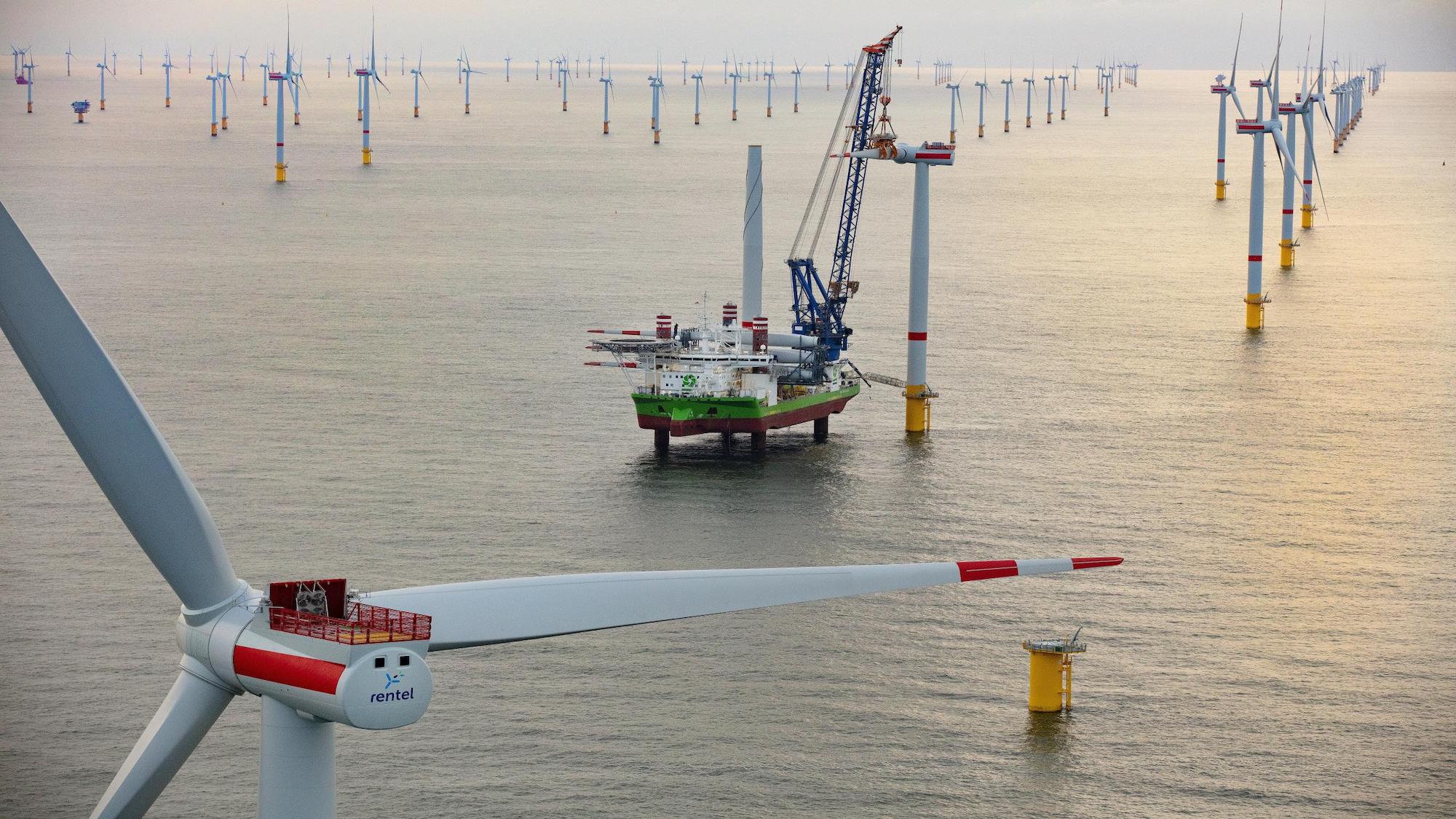As offshore wind turbines grow increasingly larger and more powerful, the offshore wind sector could be facing a shortage of the supersized vessels capable of installing them, according to Rystad Energy.
This shortage could cause bottlenecks in the sector from 2024, unless operators invest in new vessels or upgrades, Rystad said.
Wind turbines globally, excluding China, have experienced a growth spurt in recent years, rising from an average of 3 megawatts (MW) in 2010 to 6.5 MW today, with the largest in operation clocking in at 10 MW. Turbines larger than 8 MW accounted for just 3% of global installations between 2010 and 2021, but that percentage is forecast to surge to 53% by 2030, according to Rystad.
As the energy transition accelerates, demand for offshore wind turbine installation vessels worldwide, excluding China, will increase significantly, from 11 vessel years in 2021 to almost 79 vessel years by 2030. The need for installation vessels for turbines larger than 9 MW, which was nonexistent in 2019, will grow significantly by the end of the decade and reach 62 vessel years in 2030, Rystad says.
“When turbines were smaller, installation could be handled by the first-generation fleet of offshore wind vessels or converted jackups from the oil and gas industry. However, as operators continue to favor larger turbines, a new generation of purpose-built vessels is required to meet demand,” says Martin Lysne, Rystad Energy rigs and vessels analyst.
Out of the current fleet of purpose-built vessels, only a handful of units can install 10 MW+ turbines, and none are currently able to install 14 MW+ turbines. This is expected to change towards 2025 as newbuilds start to be delivered and existing vessels get crane upgrades.
But vessels built even early this decade are already becoming outdated as turbines grow, making owners reluctant to commit to expensive newbuilds, costing between $300 million to $500 million, that could be obsolete before they are profitable, according to Rystad. But if operators don’t invest in new vessels or upgrade existing ones, the pace of offshore wind installations could slow down as super-sized turbines become the norm by the end of the decade,
You can find Rystad Energy’s full research here.
Unlock Exclusive Insights Today!
Join the gCaptain Club for curated content, insider opinions, and vibrant community discussions.

 Join The Club
Join The Club













